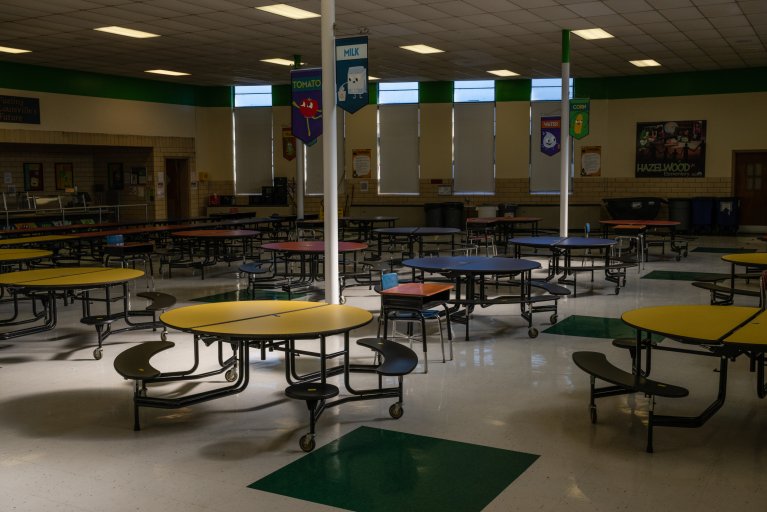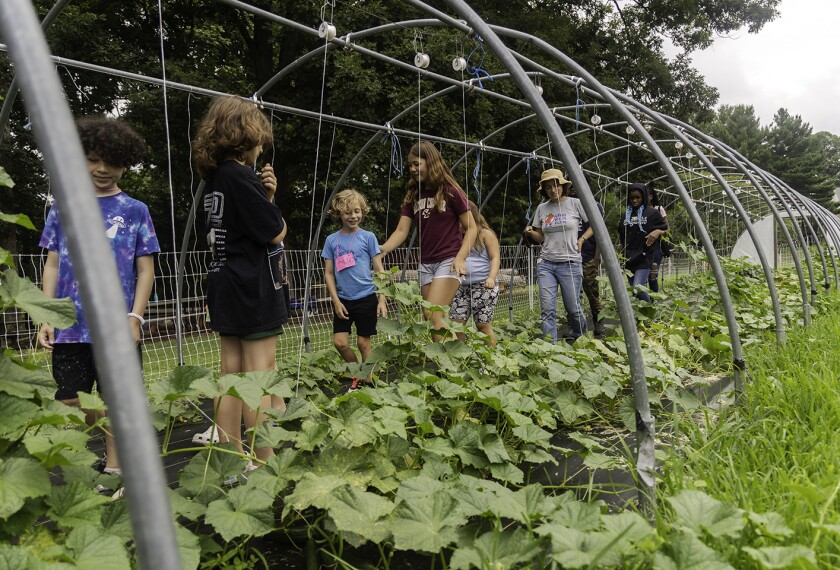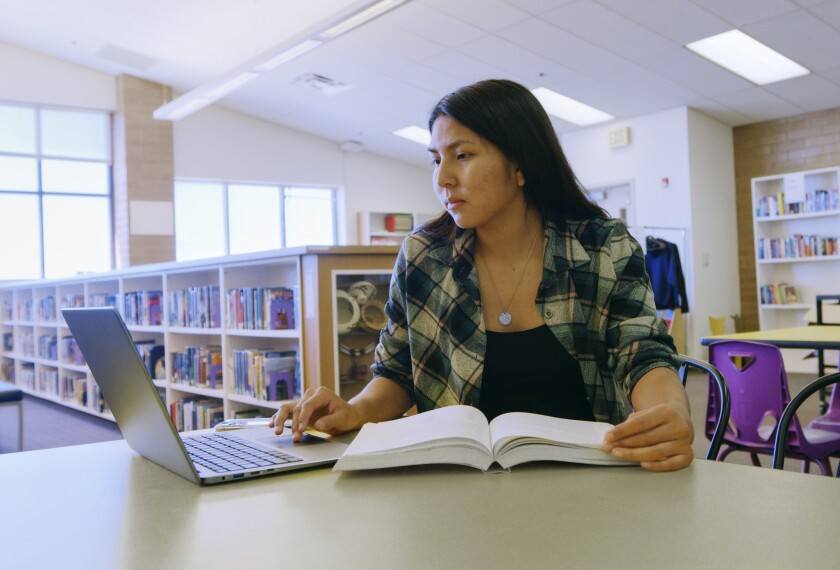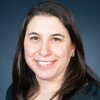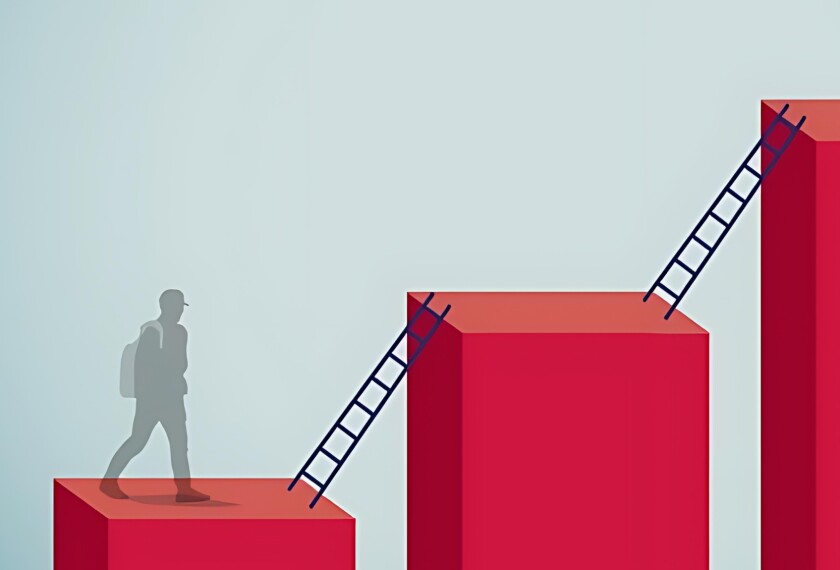Bob Templeton has spent close to three decades thinking about the connections between population trends and public school enrollment. The job has become more difficult than ever.
In fast-growing Texas, where Templeton is based, overall enrollment in public schools had been rising by up to 60,000 students a year before the pandemic. Since then, that growth has slowed considerably. Last year, K-12 enrollment increased by only 12,000 students, even as the state’s overall population grew faster than most other states’.
“That’s when I saw the data and went, ‘Wow, there’s something going on here,’” Templeton said.
Templeton’s job is to help school districts find out what that something is, and guide them on how to respond. He serves as vice president of the school segment of the Texas-based firm Zonda.
The company contracts with school districts in Texas and other states to provide enrollment projections and demographic analyses that help school systems prepare for their future needs, including new construction, building closures, revised boundaries, and staffing adjustments. Those analyses draw on Zonda’s robust database of new housing construction across the United States.
Enrollment declines have become a hot topic and increasingly common reality for school district leaders nationwide. Districts have faced additional competition in recent years due to the proliferation of charter schools and the expansion of state-funded private school choice programs. Declining birth rates portend a smaller number of children who will be attending school in the coming years. And a small segment of students have fallen off schools’ radars since the start of the COVID-19 pandemic.
When schools lose enrollment, they also lose funding, even when costs like utilities and staff compensation remain fixed. Most states calculate school funding based in part on the number of students districts enroll. And overall population declines translate to lower collections of local property taxes, which contribute another significant chunk of most K-12 district budgets.
Education Week interviewed Templeton by phone last month for his analysis of current enrollment trends. The interview has been edited for length and clarity.
When a school district contracts with your firm and wants help figuring out enrollment patterns, how do you start?
For 70 percent or 80 percent, it’s a routine. We’re working with those fast-growth districts, in suburban communities where they’re literally building hundreds if not thousands of homes a year. These school districts are needing to plan when and where to have bond elections, build schools, open schools. We help them with the logistics of, how do you draw attendance boundaries, and shift the zones to accommodate the new buildings?
We do have those that are the urban districts that are declining in enrollment. We’re doing the opposite there. We are helping them figure out how to close schools. Ten years ago, we might have done one to two of those projects every three or four years. This year, I believe we did six of those projects. I think now going forward it’s going to be a regular yearly event.
How difficult is it to predict what enrollment will look like in a particular school district, or region, or state?
In the past it’s been very predictable to understand the school enrollment growth as it relates to housing. We could get within 1 percent of forecasting enrollment change because the connection was so strong. We noticed about seven to eight years ago, the connections started to slip. It wasn’t as tightly correlated as we had seen.
It’s definitely making our job more difficult. It’s now slipped into a 2-3 percent range. We’re wrestling with, how do we improve our modeling based on what we’re seeing?
What I’m finding that we end up doing now is, the school year starts, the enrollment comes in, and let’s say we’re off by 400 or 500 kids. The question is, what happened? We’re doing our detective work, and we’re trying to decide, did they leave because of a problem within the district, or is it because of a new offering, or did the neighboring school district change its policy around transfers?
It’s almost like playing a game of chess. The school year starts, the first moves are made in terms of enrollment patterns, then districts are scrambling around: We need to open our boundaries, we need to offer programs of choice to create magnet schools, to provide more options so we can get those kids back.
What’s behind the unpredictable fluctuations?
There certainly is an impact because of the changes in birth rates. The normal yield of students per single-family house that we saw for many years has dropped.
But then what’s also happening is the choice options. Ten years ago, folks moved into a neighborhood and they looked up to see what was the elementary zone that served the neighborhood and that’s where they went. They didn’t explore and think about if they have any options.
In the last 10 years, in Texas we have seen the expansion of charter schools. And now I think the equal impact is the home school. There’s been a tremendous advance of online resources that have become available for hybrid learning, home-school learning, and now with social media and the ability to connect easily, it’s not just an individual experience even for home-schoolers now. They’ve become micro-communities. They have graduations, they have proms, they do things in groups that didn’t happen 10 years ago.
What’s fueling the enthusiasm for alternative options, from what you’ve seen?
It’s almost been the perfect storm over the last four years. Really, the pandemic ushered in this wave of change. Part of the change was related to flexible work arrangements, accelerating some choices for families to move to different regions.
We’re experiencing this political tension that is not like I’ve ever seen. I attend and present at anywhere from 50 to 80 school board meetings a year. For some of these school districts, whatever the decisions they were making were, there were equal numbers of people displeased with the decision on both sides. I literally sat through one meeting at a school district in the Austin area, early on in the pandemic, where they were requiring masks, but there were parents that were mad about that, and then there were parents that were mad they weren’t enforcing it enough. Man, they stand no chance.
Now it’s pretty common that at every board meeting I attend, I’m going to hear three to a dozen patrons that want to address the board in public comment on a variety of topics. Ten years ago I could have counted on one hand how many board meetings I would have to listen to public comment at the beginning of the board meeting. When you did, it was about a specific incident about something that went on with their child.
Now it’s very broad around library books, about bathrooms, about a litany of topics that are politically tense. This tension is causing parents on both sides of the equation, the spectrum, to disconnect.
How are those political tensions affecting enrollment? What evidence do you have of the connection between the two?
I attended the Texas home-school conference last summer just because I was curious. I was purely attending as a fly on the wall. I had no expectation of what I was going to be walking into. There were 6,000 families that were attending. It was packed. They had a trade exhibit with vendors. They are organized, they are communicating with the masses.
I interviewed two to five couples in each session: Why are you doing this? How long do you plan to do this? What are the advantages? What are the disadvantages? What do you think of public education?
For many of them, it wasn’t about ideology, it was about choice. It was about flexibility. These were families where one of the parents didn’t work full time. They had a parent to commit a certain amount of the week to education for their child.
When you’re in a traditional public school structure, your preparation for the day has to start at 6, 6:30 in the morning, to wake up, get fed, get clothed, get to school. So it’s taking up a nine-hour chunk of the day, whereas the home school could be as minimal as two to four hours a day. Some folks were into environmental issues, and man, they could devote more time to those kinds of issues and were more creative. Whatever your niche is, you can find a micro- or home-school community or element to support your passion.
I do believe that it is the home school element that is having the biggest impact on public ed. enrollment drop. I think the school districts think it’s about ideology. But I think it’s more about what I’m seeing with millennials and Gen Z: They want options and they want more control.
How do you deal with the persistent lack of reliable data on homeschool enrollment?
The problem in Texas is the home-school parents do not have to report to the Texas Education Agency that they’re home-schooling. We really don’t have a good way to understand what’s happening with the home-school enrollment. During the next legislative session, Gov. [Greg] Abbott is definitely going to be promoting vouchers and choice. If there’s any money that is tied to home school as a credit, I’m hopeful that they’ll need to report that they’re home-schooling to get that. Maybe we can start to see what the numbers really look like.
What else is on the horizon that could affect public school enrollment?
Homeownership is at record lows. There’s a couple of things at play around homeownership.
One of them is the cost. The cost really accelerated during the last three years because of the pandemic. There were the supply chain problems, the shortage of labor, the bureaucratic hoops that have to be jumped through to get new land deals approved. Then you layer in there the financing cost of the mortgage rates. Now they’re at 7 percent. Combined with this dramatic inflation in the cost, that’s putting homeownership out of reach for a lot of the really young buyers. A lot of millennials are hesitant to even get into that kind of commitment. They would rather rent, and have the flexibility to move.
Now we are seeing in Zonda a real explosion in the single-family, for-rent communities. It’s probably growing the fastest of any of the types of home construction. Multi-family apartments have had a pretty dominant run for a while. But now it’s this single-family, for-rent product that is really growing at a tremendous rate.
We’ve seen a tremendous loss of trust in institutions. Education fits in that category. The anchors of a community used to be, you buy a home, you go to church, you attend public school, you go to the park, and you play in these city leagues. Those pillars are not there anymore.
Disclaimer: The copyright of this article belongs to the original author. Reposting this article is solely for the purpose of information dissemination and does not constitute any investment advice. If there is any infringement, please contact us immediately. We will make corrections or deletions as necessary. Thank you.
